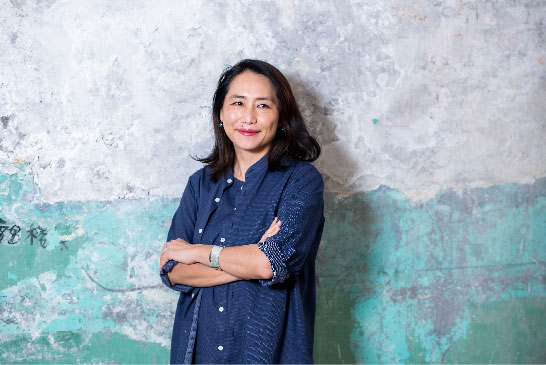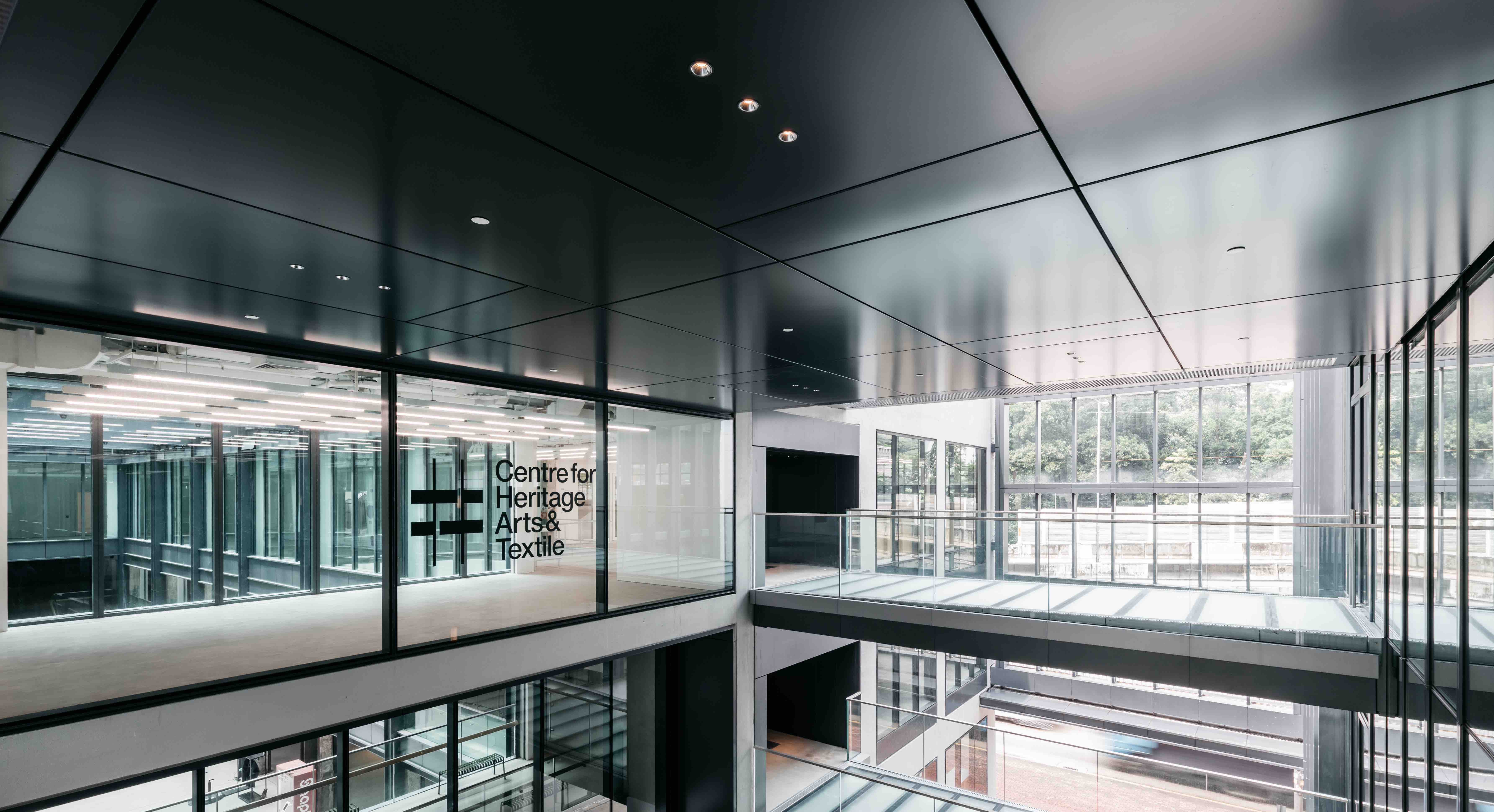
Two Years of CHAT: Looking Back with Takahashi Mizuki
13.04.2021
In this interview, CHAT Executive Director and Chief Curator Takahashi Mizuki muses over the first two years of CHAT, recounts the most memorable moments in the past few seasons, and looks to the future.
To you, what can the exhibition experience bring us?
When visitors arrive at CHAT, they are always first asked to deposit their heavy bags and belongings into the lockers at Reception. This is without a doubt a way to protect the artwork and artefacts on display, however this procedure also invites you to lay aside your daily burdens and concerns, and to experience the artworks solely with your body and eyes. This allows you to anticipate and encounter artworks one by one, and to conduct personal conversations with the artworks.
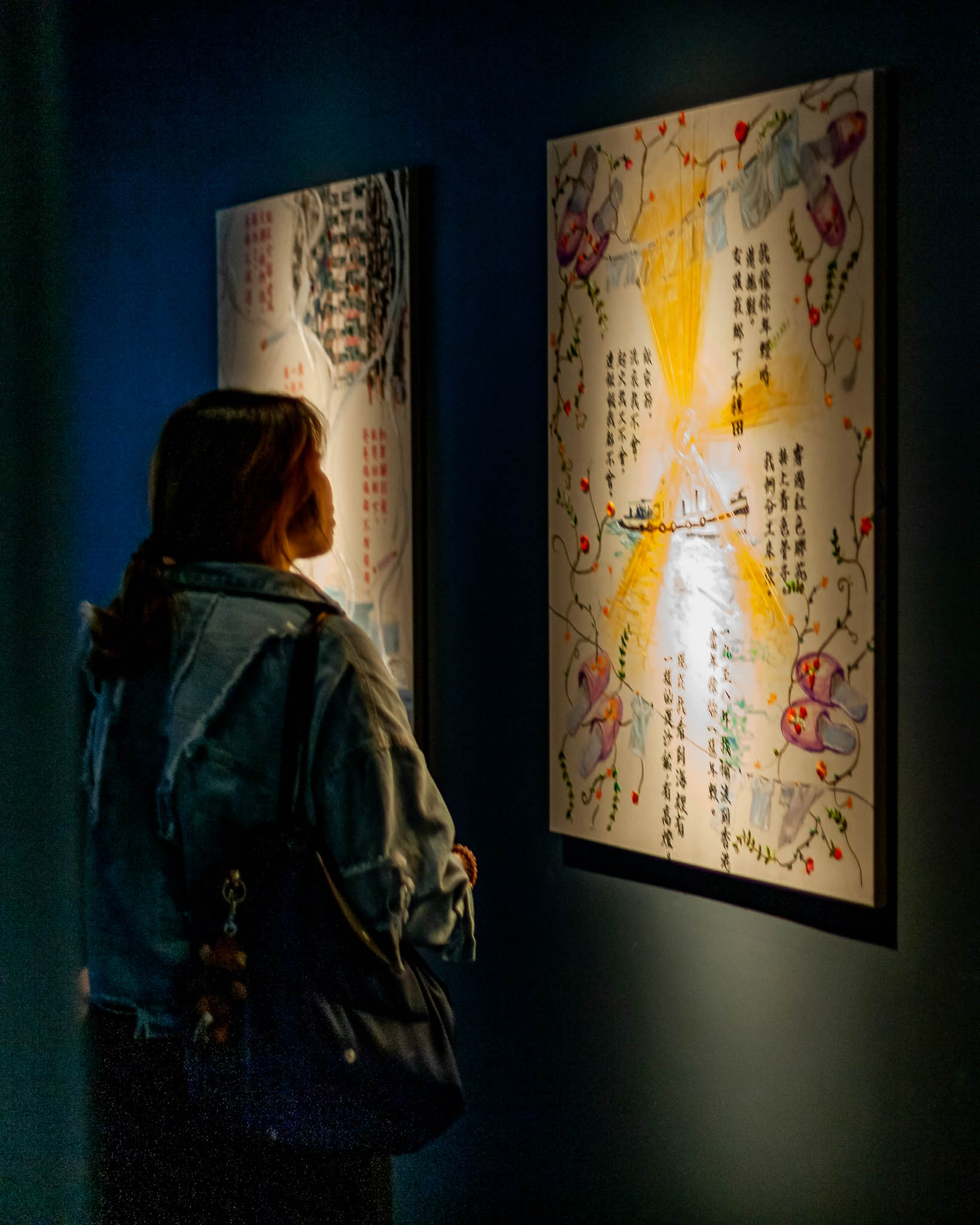 Visitor viewing works by Jung Yeondoo in the Inaugural Season of CHAT
Visitor viewing works by Jung Yeondoo in the Inaugural Season of CHAT
Artworks can be our very good friends, they embrace who you are without question or consideration. In museums, you are allowed to be yourself without the obligation to enact any social roles. The museum experience can be different for everyone, but I have found that good artworks always ask open-ended and ‘bottomless’ questions. Often you can find yourself in artworks as well.
Nowadays, it’s so easy to view artworks from a screen or with a smartphone. The museum experience gives you a physical space and asks you to isolate yourself from the outer world, and instead dive into the world of art and imagination─humanity’s great power─to conduct self-questioning and reflection, and to envision an alternate world, one which has no simplistic answers.
What are your strongest memories of CHAT when it was still undergoing construction?
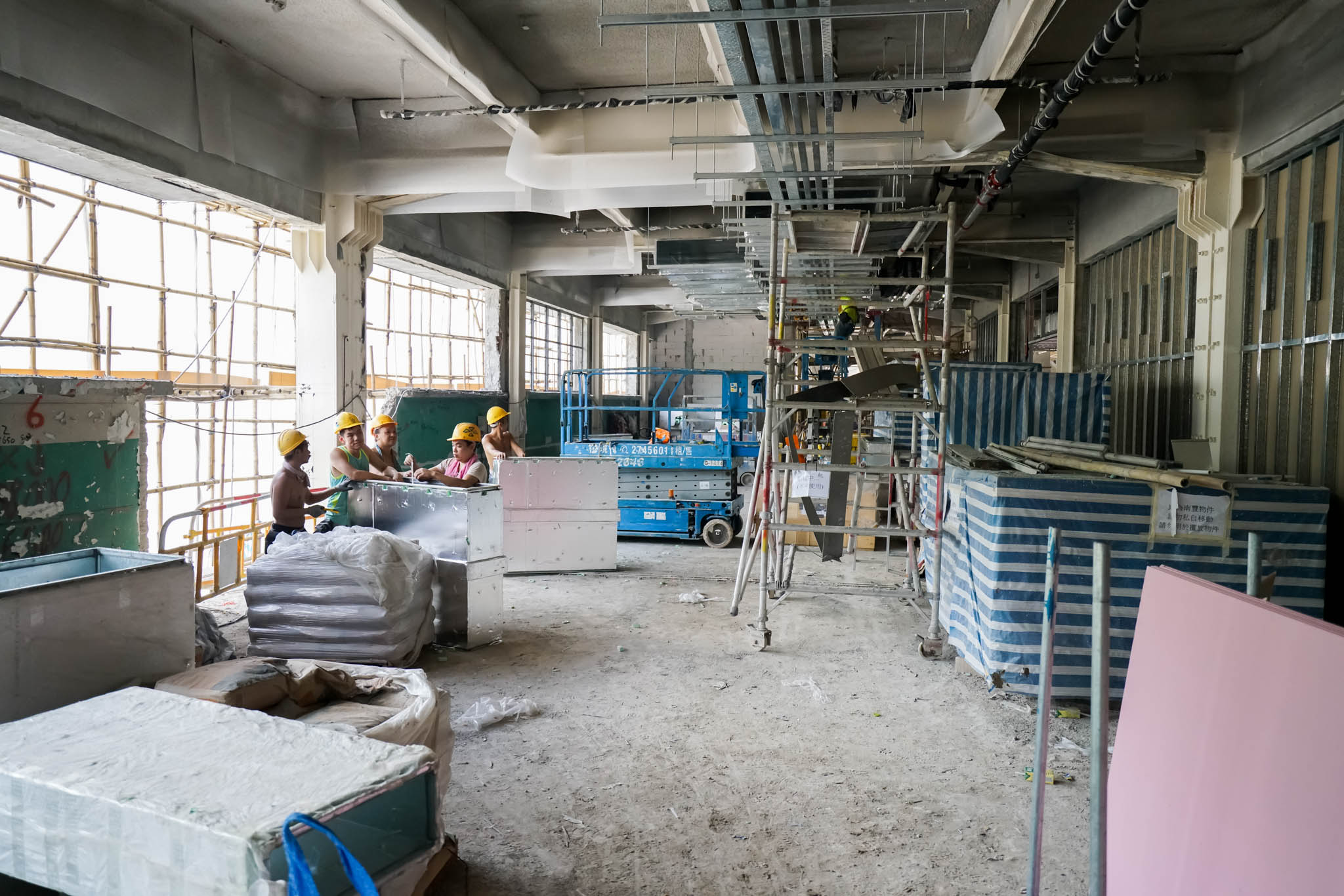 Site visit to The Mills in September 2017
Site visit to The Mills in September 2017
We made 5 or 6 site visits to The Mills during its revitalisation and construction. It was hot and humid, typical of summer days in Hong Kong, and we had to put on helmets and masks, which were uncomfortable. Though the workers donned protective gear as they carried heavy blocks and cut through metal bars, they seemed so vulnerable. Sections of the building were in various states of demolition with only the beams left standing, almost like a skeleton.
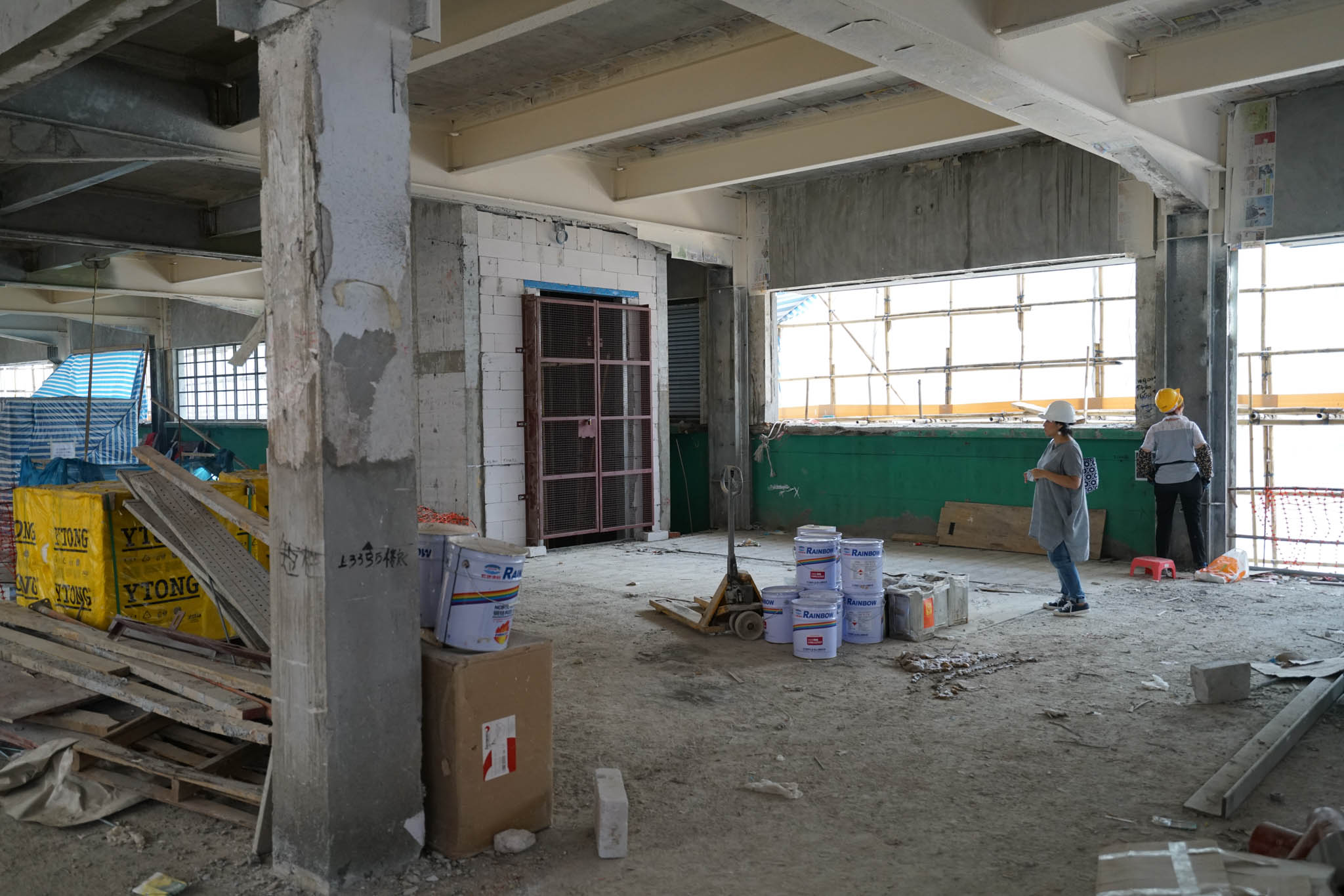 Takahashi Mizuki on a visit to The Mills on 30 June, 2017
Takahashi Mizuki on a visit to The Mills on 30 June, 2017
On those site visits I also remember seeing a few female workers, which created for me this overlapping of time, from the days of the factory in operation and then in construction. It led me to imagine the kind of labour force essential in converting the building into what we have today. But once the building is completed, their existence and their efforts became invisible again. This made me re-consider what labour is, and how to tell people about the workers’ contributions.
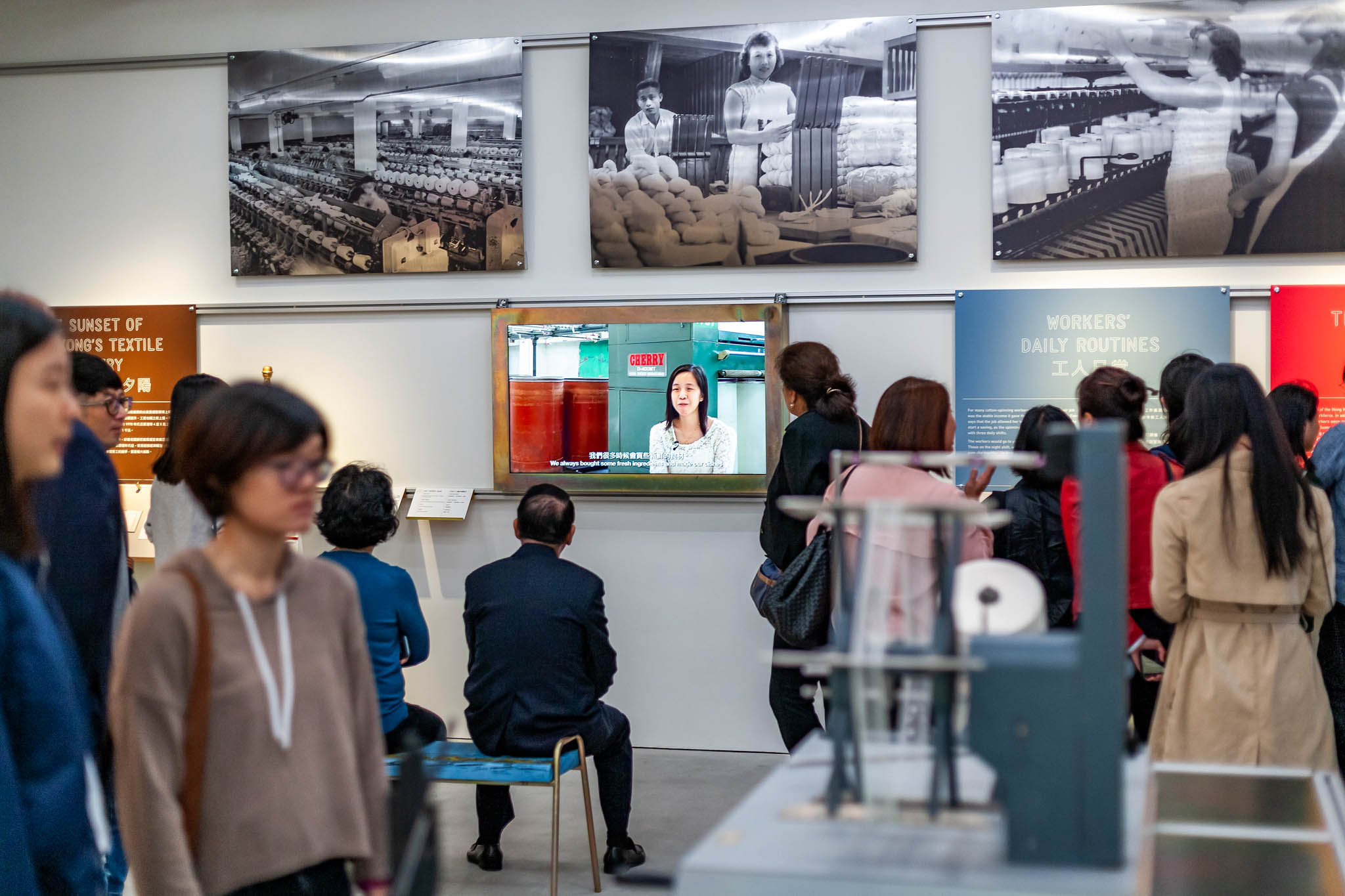 Visitors listening to stories by former workers at The D. H. Chen Foundation Gallery
Visitors listening to stories by former workers at The D. H. Chen Foundation Gallery
Today, at the end of The D. H. Chen Foundation Gallery at CHAT is a memory bank wall, telling the stories as recounted by former workers who worked in textile factories. And through inviting artists to document the revitalisation project in our Archiving The Mills Through The Lens exhibition, in particular, we were able to keep a record of the portraits of all the workers who had a hand in bringing this factory back to life.
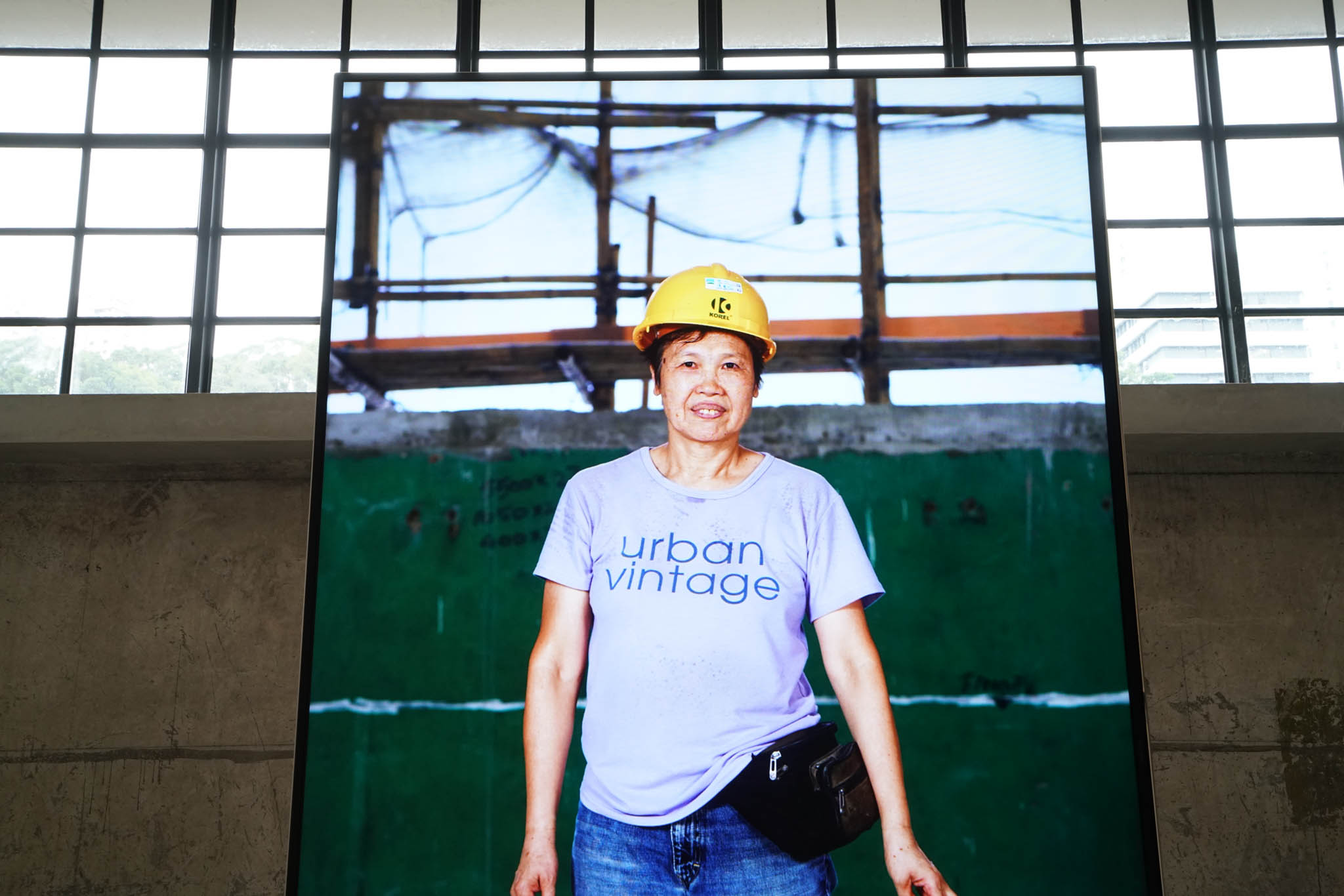 Tse Ming Chong, Anonymous Workers, 2018
Tse Ming Chong, Anonymous Workers, 2018
Visual art makes the invisible visible. I am proud to say that this is a promise we kept and will continue to keep.
When you look back at the two years of CHAT, what are the specific moments that stick out in your mind?
For the Inaugural Season of CHAT, we invited Pangrok Sulap, a collective based in Sabah known for making communal woodblock prints, to perform at our Opening Reception. They stayed in Hong Kong for two weeks, during which they got to see the contrasting sides of Hong Kong, from the busy streets of the city centres, to the suburbs and countryside, and absorbed these colourful experiences into their work.
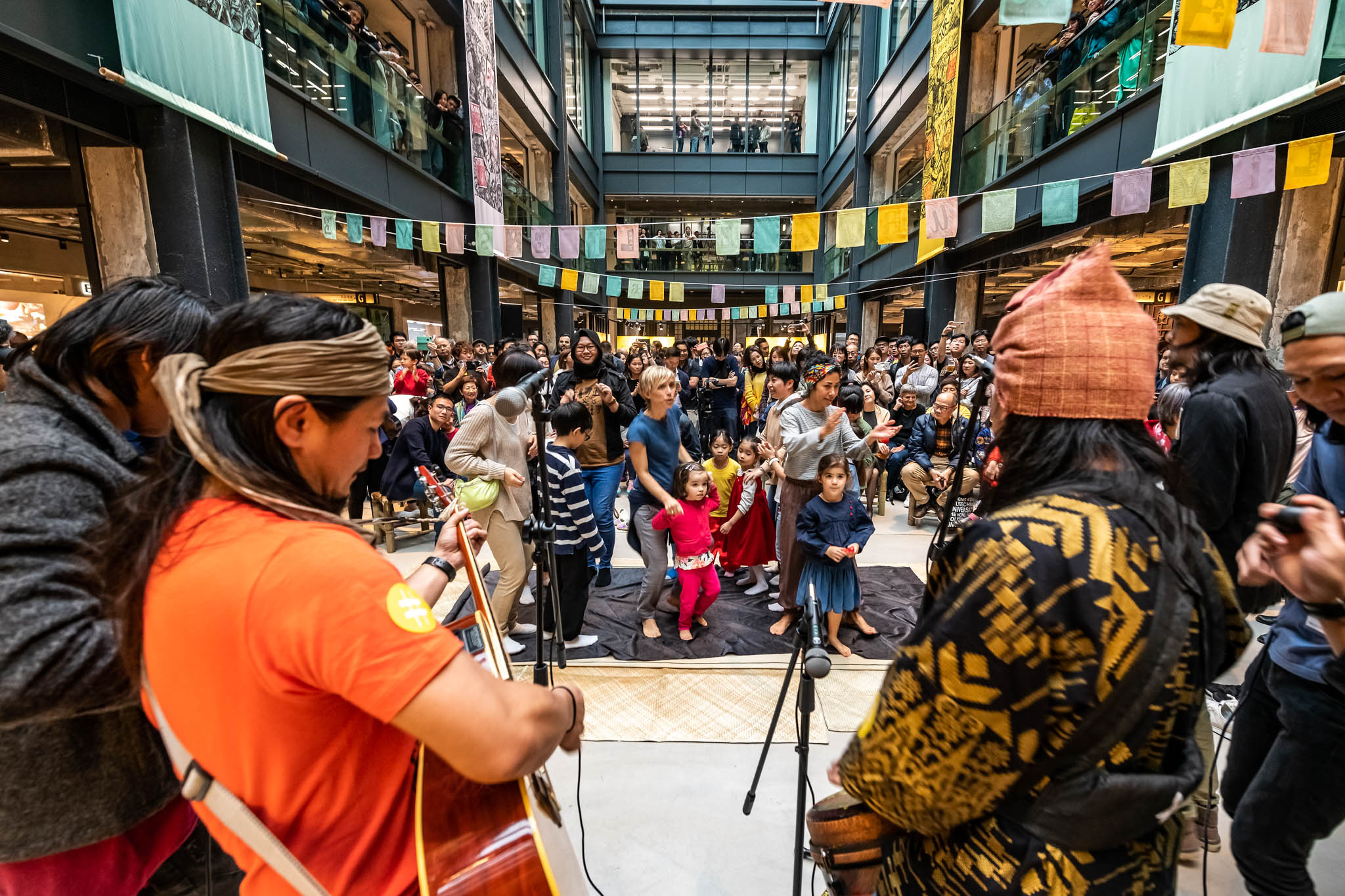 Pangrok Sulap and visitors celebrate the grand opening of CHAT in March 2019
Pangrok Sulap and visitors celebrate the grand opening of CHAT in March 2019
To celebrate the opening of CHAT, they invited the public to help create woodblock print banners that hung in The Hall. We had all these different people come to take part in the workshops and performance, from children, to the founder of The Mills, Vanessa Cheung, people from the neighbourhood, even a visitor in a wheelchair. And looking at the crowds and the smiles on people’s faces on the opening day, I felt, this is how art should be. Open to anyone who wishes to share the joy of the art experience.
One year later, COVID-19 hit the city in the midst of our spring show and we had to close the gallery for almost 2 months. On the first day of the re-opening, I went over to the gallery to check that the operations went smoothly. There were more visitors than I expected. And there was this invisible energy in the air, that seemed to uplift the entire gallery.
Though the artworks cannot speak, it was as if I could see the traces of thought – an intellectual or emotional energy – flowing in the empty void between the artwork and its beholder. If we consider the ability to think, to imagine and to express as what quintessentially define us as humans, then artworks must be the crystallisation of these efforts.
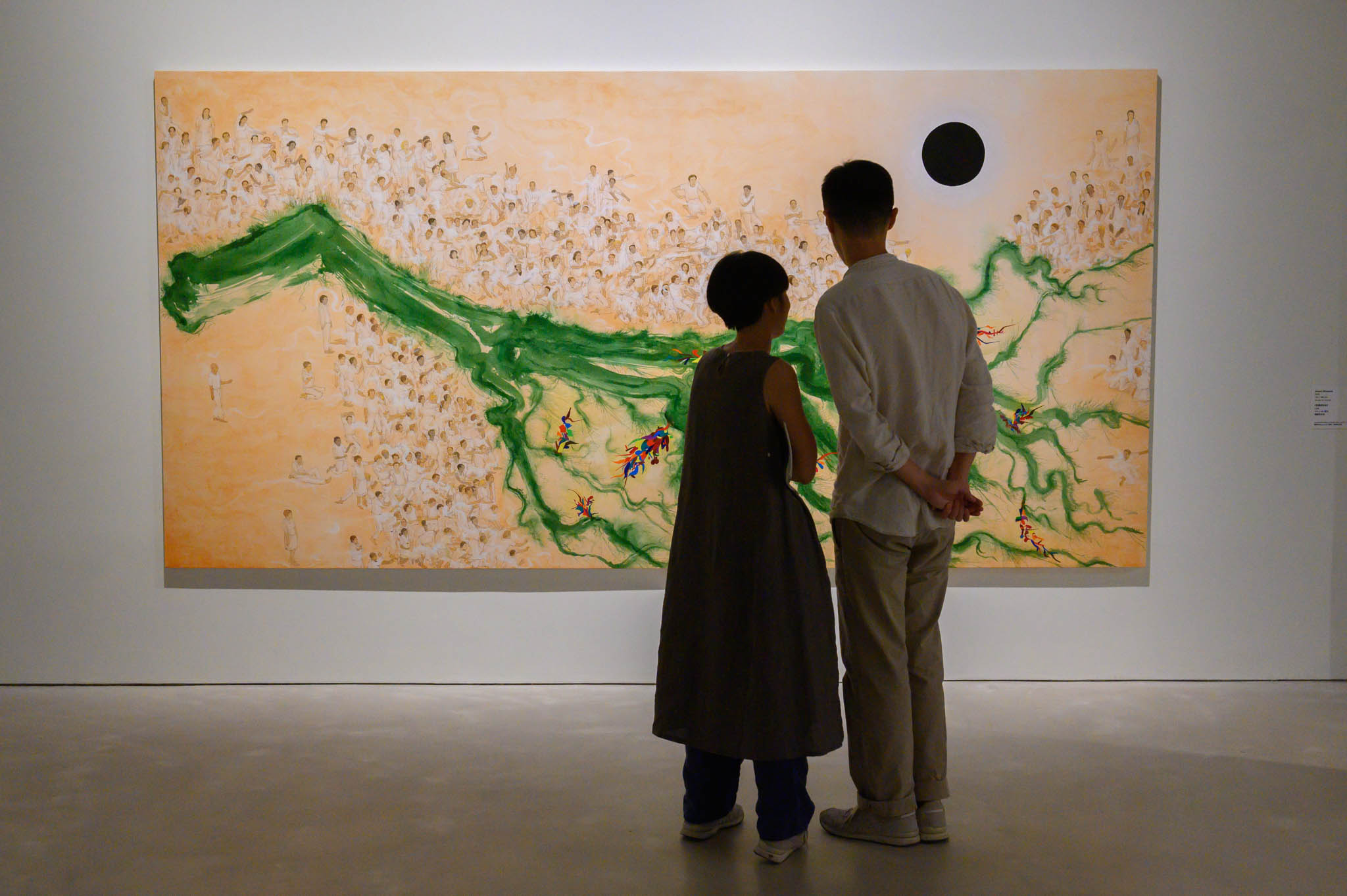 Visitors contemplating works by N S Harsha during Summer Programme 2019
Visitors contemplating works by N S Harsha during Summer Programme 2019
What is your vision for CHAT in the future?
We envision CHAT as a place that offers visitors new knowledge of textiles, art, design and heritage for better change of the society, to preserve local intangible and tangible heritage for future generations. Our goal is also to cultivate audiences to appreciate contemporary art and design in a comprehensive way, as all human artforms are connected and mutually influence each other. We also expect to continue to contribute to international discussions of art and textiles with an Asia-Pacific perspective. As an art centre that weaves creative experiences for all, we also aim to embrace diverse backgrounds and cater to the needs of a diverse audience.
CHAT has been establishing a distinctive positioning, both in the city and the wider world. We are not a conventional textile nor industrial museum, but with three seasonal exhibitions a year, we try to be as welcoming and accessible as possible, so that our visitors can find CHAT as a place of leisure and knowledge which they can visit again and again.
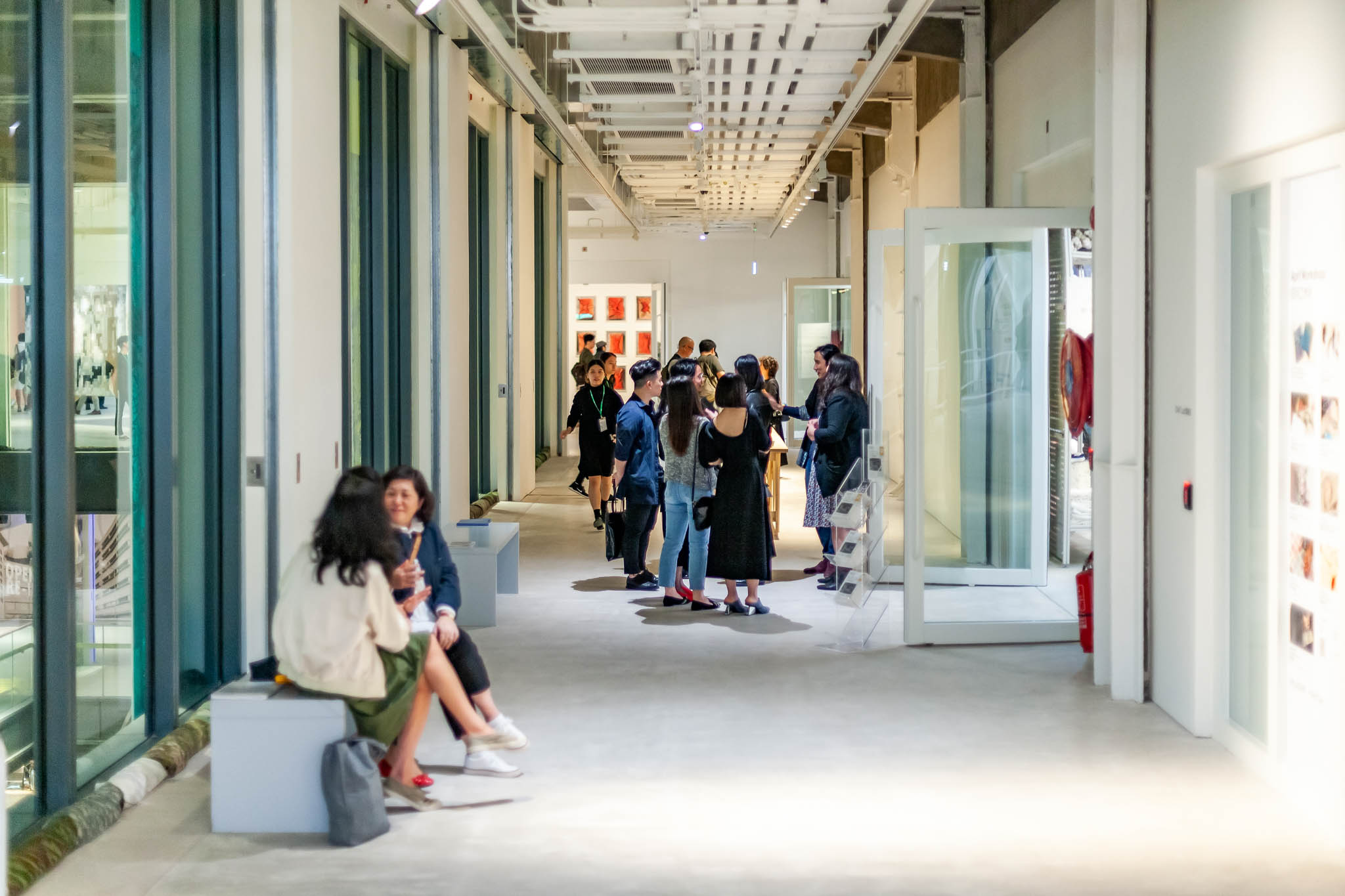 Visitors at CHAT Arcade
Visitors at CHAT Arcade
Historically, Tsuen Wan is the industrial root of Hong Kong that paved the way for its development. We hope that our contemporary art and design exhibitions can be an entry point for visitors, particularly those who are not familiar with Hong Kong’s textile industry, to know about this little known part of industrial heritage and how it has contributed to the Hong Kong we know today. We hope that CHAT may also be a place of civic pride for the neighbouring community, one which the community will be proud to invite guests, whether local or international, to come and enjoy quality programmes and workshops that cannot be experienced elsewhere.
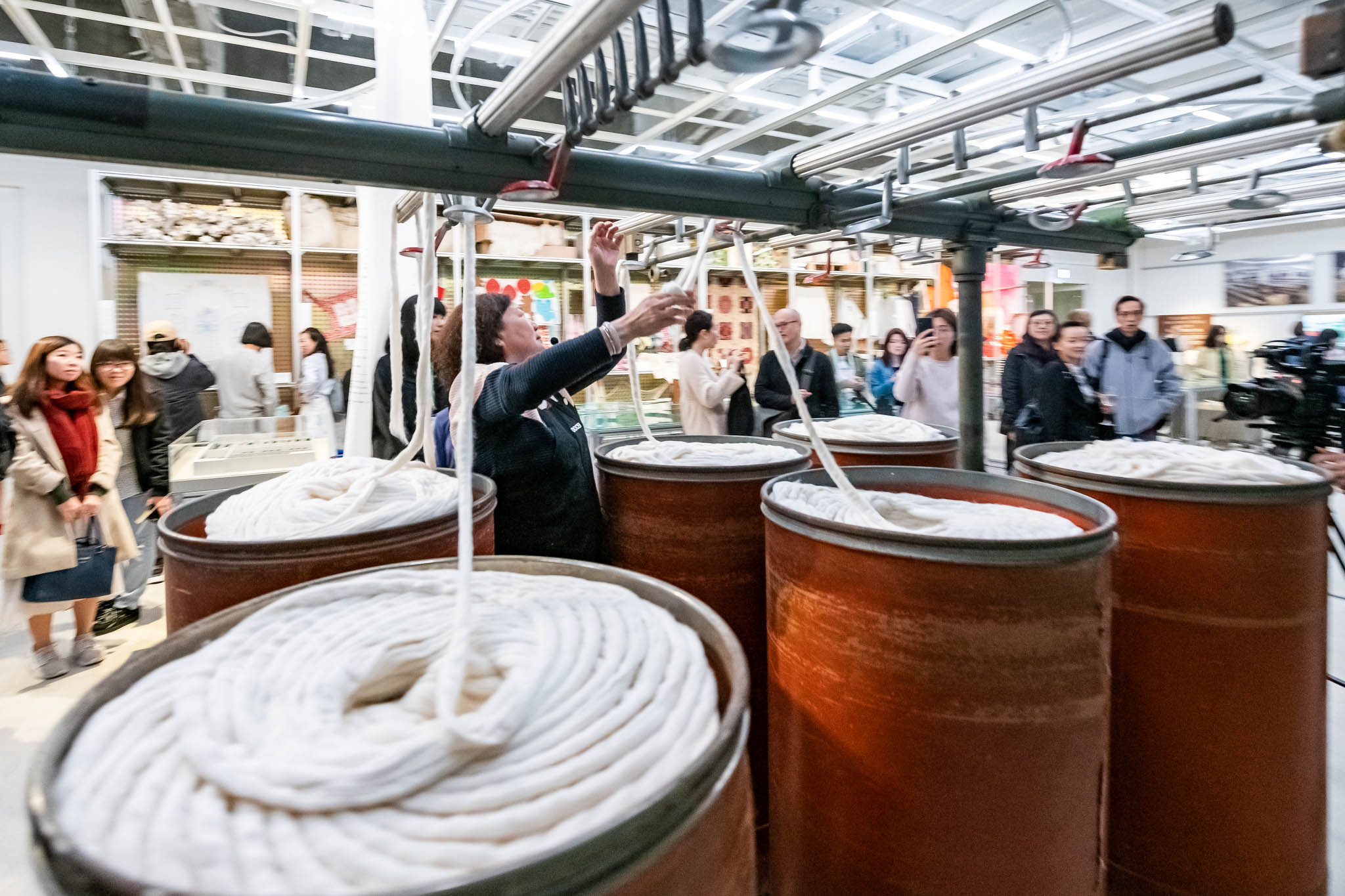 Former textile worker Auntie Yee (Leung Fung Yee) operating the Cherry Draw Frame machine
Former textile worker Auntie Yee (Leung Fung Yee) operating the Cherry Draw Frame machine
